|
Females
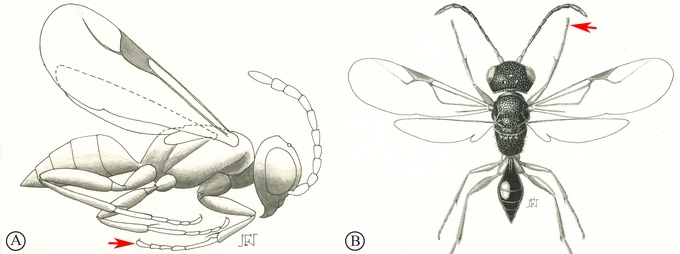
1. Protarsus not
chelate (A, B) ...Aphelopinae
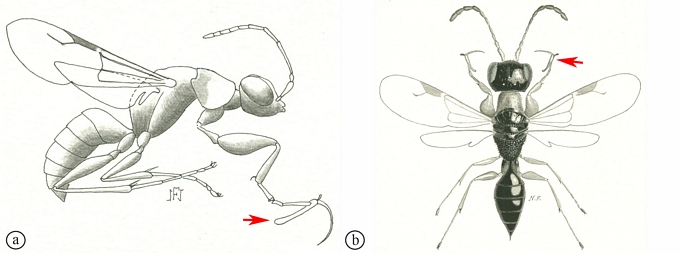
- Protarsus chelate
(a, b) ...2
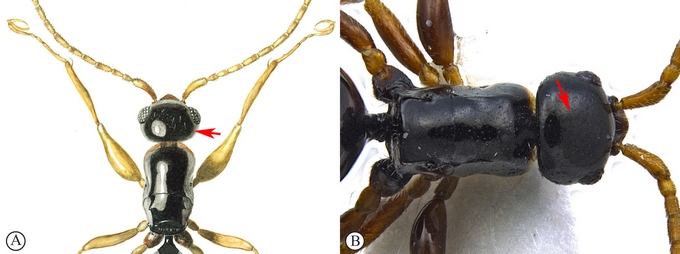
2. Ocelli absent (A,
B) ...Apodryininae
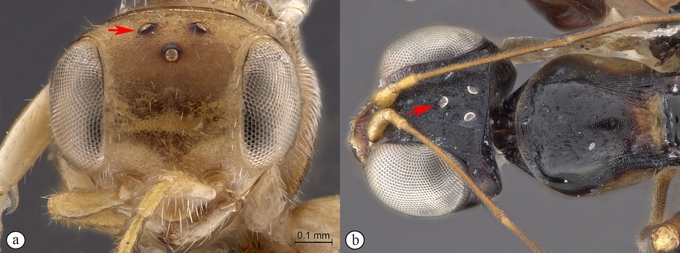
- Ocelli present (a,
b) ...3
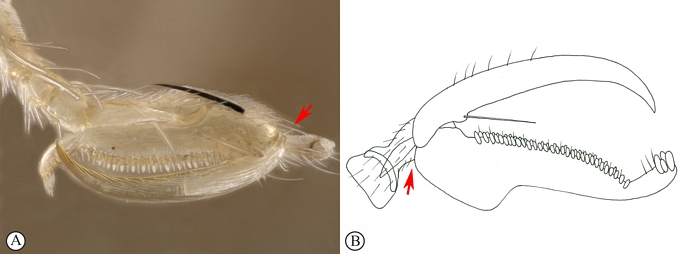
3. Chela without
rudimentary claw (A, B) ...Anteoninae

- Chela with one
rudimentary claw (a, b) ...4
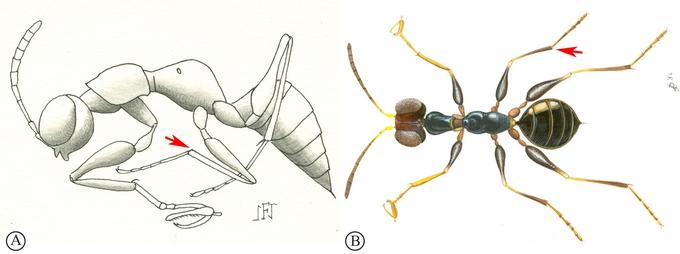
4. Meso-tibia without
spurs (formula 1/0/1 or 1/0/2) (A, B) ...Gonatopodinae
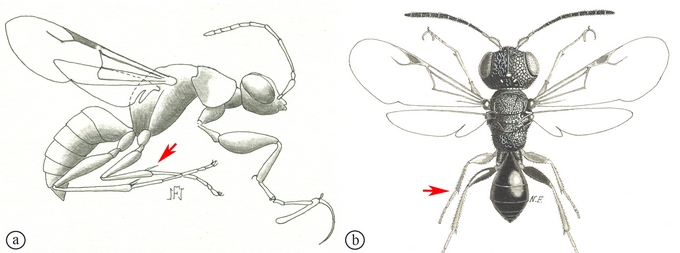
- Meso-tibia with one spur (formula 1/1/1 or 1/1/2) (a, b)
...5
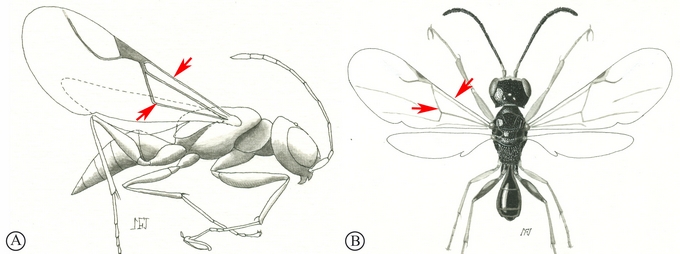
5. Always fully
winged; forewing with C and R cells clearly enclosed by pigmented veins (A, B)
...Conganteoninae
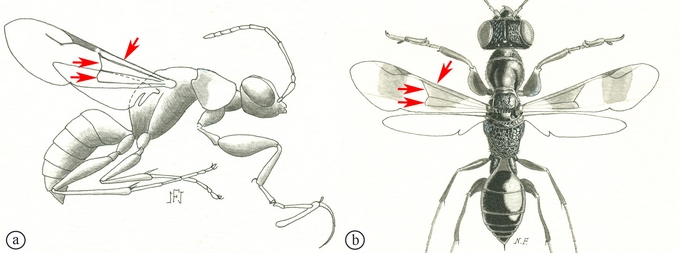
- Fully winged, or
rarely micropterous or apterous; forewing of fully winged forms with C,
R and 1Cu cells clearly enclosed by pigmented veins (a, b) ...6
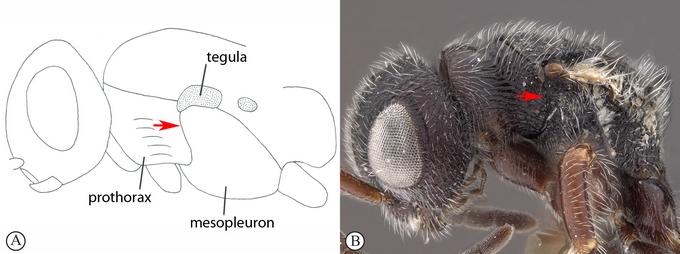
6. Lateral regions of
prothorax continuous with mesopleuron; epicnemium concealed (A, B) ...
Bocchinae
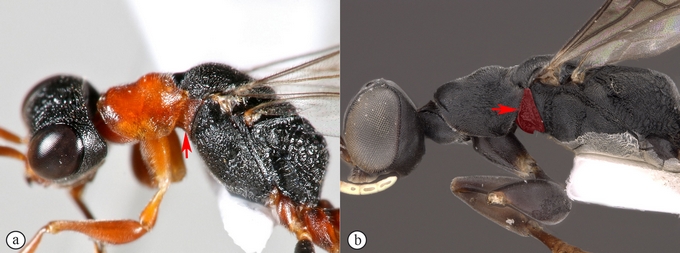
- Lateral regions of
prothorax not continuous with mesopleuron; epicnemium exposed (a, b) ...7
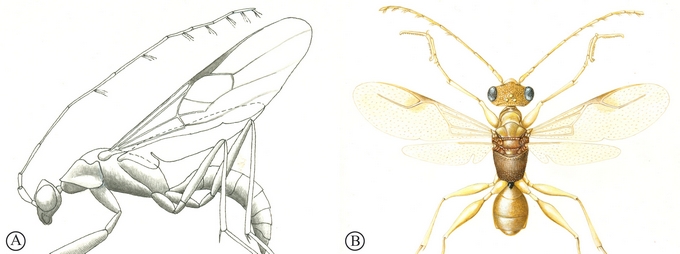
7. Antenna with tufts
of long setae on segments 5–10 (A, B) ...Thaumatodryininae
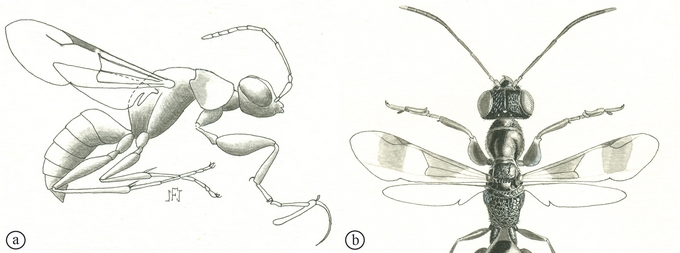
– Antenna without
tufts of long setae (a, b) ...Dryininae
Males
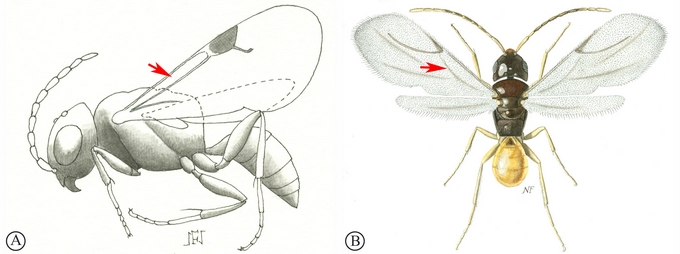
1. Fully winged;
forewing with only costal cell enclosed by pigmented
veins (A); or without costal cell, may be semi-defined by un-pigmented vein (B),
or occipital carina complete ...2
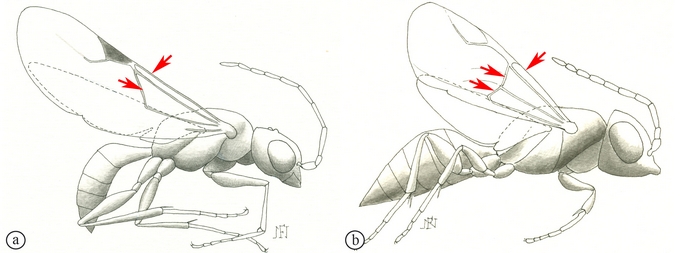
- Fully winged,
micropterous, brachypterous or apterous; forewing of fully winged forms with
costal and 1–2 further basal cells clearly enclosed by pigmented veins (a, b);
occasionally forewing with only costal cell clearly enclosed by pigmented veins,
then occipital carina absent (in some males of Gonatopodinae) ...3
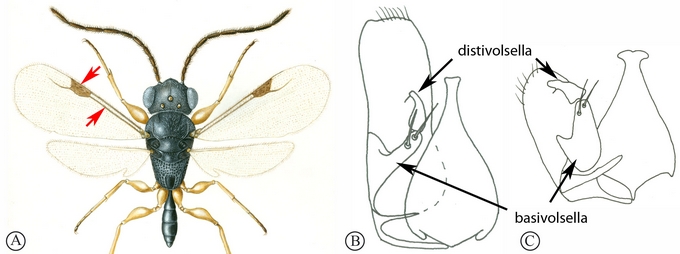
2. Forewing with
costal cell and large pterostigma (A); veins delimiting costal cell present;
other veins absent, their course not being marked by dark stripes (A); basivolsella situated
completely below distivolsella apex (B, C) ...Aphelopinae
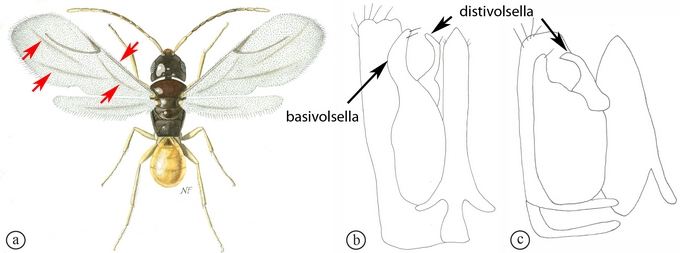
- Forewing without
costal cell and pterostigma or with very reduced pterostigma (a); costal vein
present, other veins absent, the course of M and Cu veins being marked by dark
stripes (a); basivolsella with lateral distal process parallel to distivolsella
and reaching at least the same level as apex of distivolsella (b, c) ...Apoaphelopinae
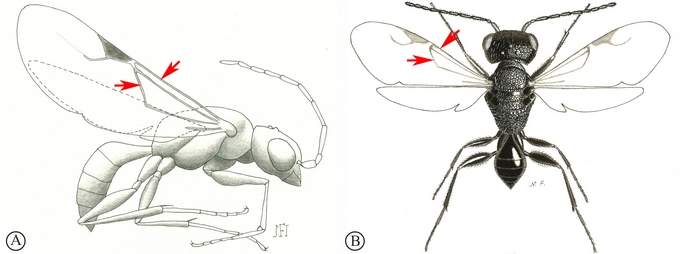
3. Always fully
winged; forewing with C and R cells clearly enclosed by pigmented veins (A, B);
occipital carina complete ...Conganteoninae
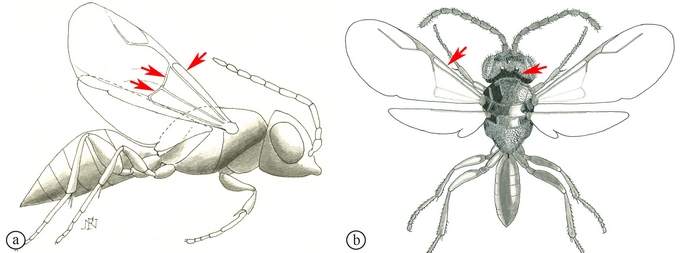
- Fully winged, or
rarely micropterous, brachypterous, or apterous; forewing of fully winged forms
with C, R and 1Cu cells clearly enclosed by pigmented veins (a);
occasionally only costal cell clearly enclosed by pigmented veins, then
occipital carina absent (in some males of Gonatopodinae) (b) ...4
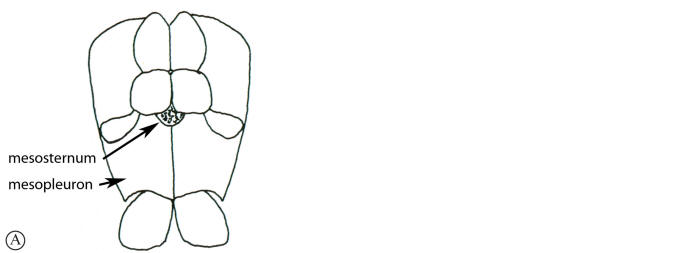
4. Mesosternum
distinct, not fused with mesopleuron (A) ...Apodryininae

- Mesosternum fused with mesopleura and not distinct (a, b)
...5
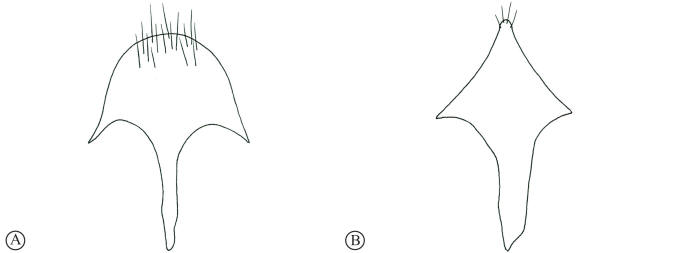
5. Hypopygium umbrella-shaped (A, B)
...6
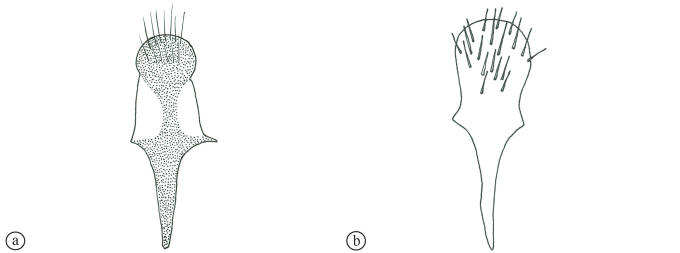
- Hypopygium not umbrella-shaped (a, b)
...8
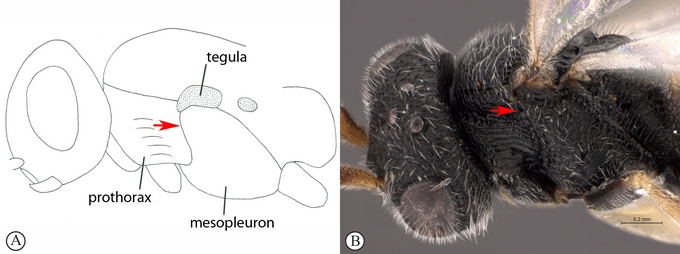
6. Lateral regions of
prothorax continuous with mesopleura; epicnemium concealed (A, B) ...Bocchinae
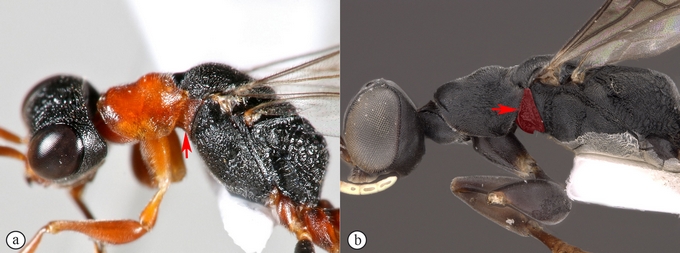
- Lateral regions of
prothorax not continuous with mesopleura; epicnemium exposed (a, b) ...7
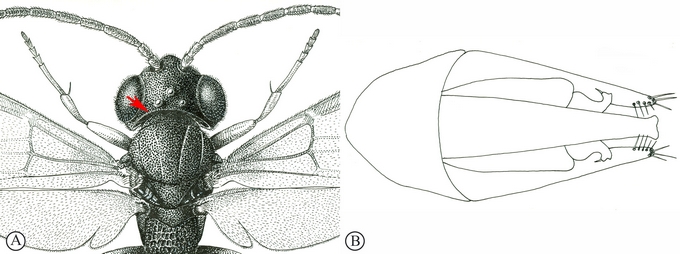
7. Occipital carina
complete or incomplete (A); dorsal process of paramere absent (B) ...Dryininae
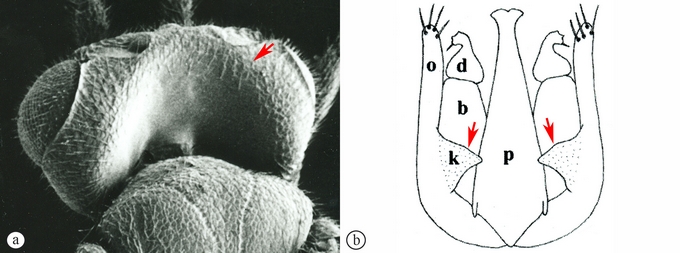
- Occipital carina
absent (a), occasionally present and complete, then dorsal process of paramere
present (b) ...Gonatopodinae
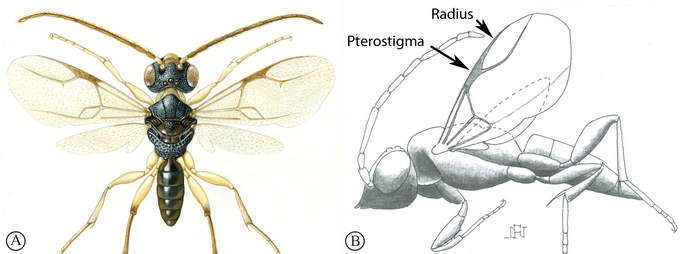
8. Forewing with
PostabR1 (i.e. radius) distal to pterostigma as long as, or longer than pterostigma
(A, B) ...Thaumatodryininae
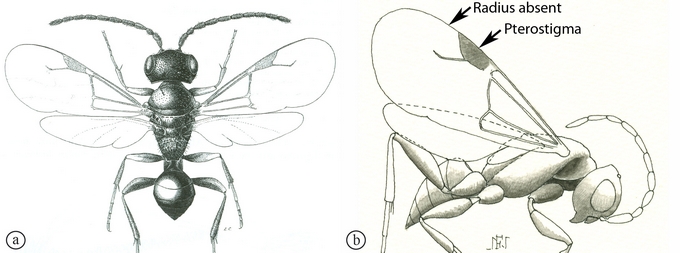
- Forewing with
PostabR1 (i.e. radius) distal to pterostigma absent or shorter than pterostigma
(a, b) ...Anteoninae
|